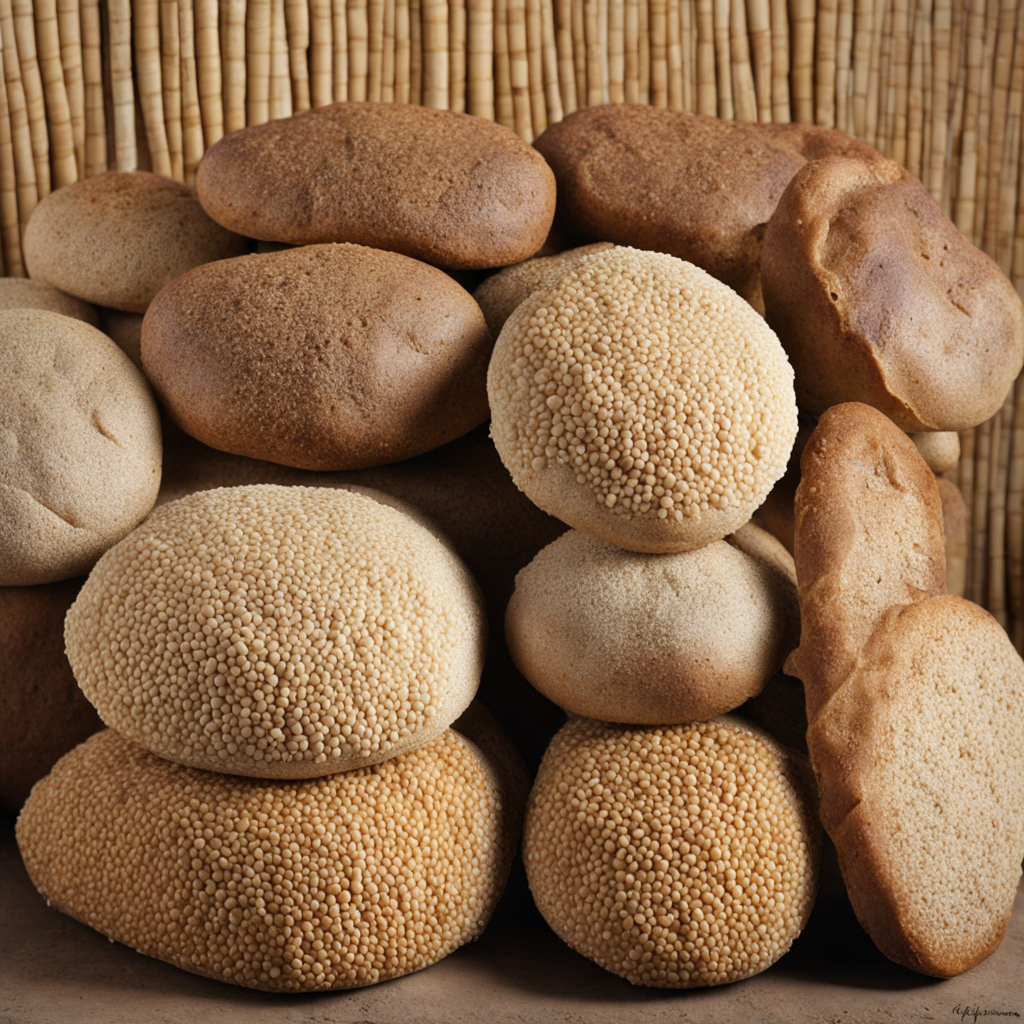Nyire
Nyire is a traditional Sudanese dish that embodies the rich culinary heritage of the region. It is primarily made from finely ground grains, often sorghum or millet, which are mixed with water to create a smooth, thick paste. This base is then traditionally cooked until it reaches a consistency similar to polenta or porridge. The dish is often served warm and has a subtly earthy flavor that reflects the grains' natural sweetness. The texture is creamy, making it a comforting choice for meals, especially in the cooler months. What sets Nyire apart is the way it is typically enjoyed. It is often accompanied by a variety of stews or sauces, which can include spiced meats, vegetables, or legumes. The combination of the soft, neutral base with the vibrant and aromatic toppings creates a harmonious balance of flavors. The stews are usually infused with spices like cumin, coriander, and garlic, offering a delightful contrast to the mildness of the Nyire. This pairing not only enhances the taste but also adds nutritional value, making it a wholesome meal. In Sudanese culture, Nyire is more than just food; it represents a communal experience, often shared among family and friends. The dish is typically served in a communal bowl, encouraging diners to scoop their portions with their hands, fostering a sense of togetherness. The experience of enjoying Nyire is deeply rooted in tradition, making it a dish that carries stories and connections through generations. For those seeking to explore a new taste, Nyire offers a unique glimpse into Sudanese cuisine, inviting eaters to savor its rich flavors and cultural significance.
How It Became This Dish
The History of نيري (Niri): A Culinary Treasure of Sudan #### Origins of نيري Niri, a traditional dish from Sudan, is a unique blend of cultural influences and ingredients that reflect the country’s rich history and diverse population. The dish primarily consists of a fermented mixture of ground sorghum or millet, which is often cooked and served in various forms, but it is most commonly associated with its use in the preparation of porridge or flatbreads. The origins of niri can be traced back to the ancient agricultural practices of the Nile Valley, where sorghum and millet were among the first grains cultivated by the indigenous peoples of Sudan. Historically, the domestication of these grains is believed to have begun around 3000 BCE, correlating with the rise of complex societies in the region. The fertile lands along the Nile provided an ideal environment for agriculture, and as societies evolved, so did their culinary practices. Niri has its roots in the traditional diets of the Nubian and other ethnic groups in Sudan, where sorghum and millet have long been staples due to their resilience in arid climates. #### Cultural Significance Niri holds a special place in Sudanese culture, transcending mere sustenance to embody social and religious significance. It is often associated with communal gatherings, festivities, and rites of passage. The preparation and consumption of niri are integral to various cultural practices, including weddings, religious ceremonies, and communal feasts. In many Sudanese households, niri is more than just food; it represents hospitality, unity, and identity. The dish is often served alongside other traditional foods, such as stews made from meat or vegetables, which enhances its role in communal dining. In Sudanese culture, meals are typically shared among family and friends, and niri serves as a unifying element on the table. The act of sharing niri, especially during celebrations, symbolizes a bond among the community, reinforcing social ties and cultural identity. Moreover, niri is often linked to spiritual beliefs. In some communities, the fermentation process is viewed as a sacred act, transforming simple grains into a nourishing dish that connects the people to their ancestors and their land. This fermentation not only enhances the flavor but also enriches the nutritional profile of the dish, making it a vital source of sustenance in an often harsh environment. #### Development Over Time As Sudan’s history evolved, so did the preparation and consumption of niri. With the arrival of different ethnic groups, traders, and colonial influences, the dish began to adapt and incorporate new ingredients and methods. The spread of Islam in the region during the 7th century brought new culinary practices and spices, which subtly influenced how niri was prepared and served. In the 19th century, as Sudan was drawn into global trade networks, new ingredients, such as spices from the East and produce from the Mediterranean, began to be integrated into traditional recipes. While the core of niri remained faithful to its origins of sorghum or millet, the accompanying dishes and flavors became more diverse, reflecting the rich tapestry of Sudanese cuisine. In modern times, niri continues to be a staple in Sudanese households, but its preparation has also been influenced by contemporary cooking methods and globalization. Urbanization has led to changes in dietary habits, with many Sudanese now opting for faster, more convenient food options. Nevertheless, niri remains a cherished part of Sudanese identity, often prepared for special occasions or family gatherings as a way to connect with cultural heritage. #### Niri in Contemporary Sudan Today, niri is celebrated not just within Sudan but also among the Sudanese diaspora around the world. As communities migrate, they carry their culinary traditions with them, introducing niri to new audiences and contributing to the global appreciation of Sudanese cuisine. In this context, niri serves as a culinary ambassador, showcasing the flavors and traditions of Sudanese culture. Moreover, the rise of interest in traditional and ethnic foods in global cuisine has brought niri into the spotlight. Food enthusiasts and chefs are increasingly recognizing the value of traditional dishes, leading to a revival of interest in niri and other Sudanese foods. Cooking classes, food festivals, and online platforms are helping to promote the dish, allowing more people to experience its unique flavors and cultural significance. In recent years, there has also been a growing movement towards sustainable and local food production, which aligns with the traditional practices of Sudanese agriculture. The emphasis on using local grains, such as sorghum and millet, resonates with contemporary efforts to promote food sovereignty and protect indigenous farming practices. This has led to an increased appreciation for niri as a dish that is not only delicious but also sustainable and reflective of the Sudanese landscape. #### Conclusion Niri is much more than just a dish; it is a testament to the resilience, creativity, and cultural richness of the Sudanese people. From its ancient origins rooted in the fertile banks of the Nile to its place in contemporary Sudanese society, niri embodies the spirit of community, tradition, and adaptability. As it continues to evolve and adapt to modern times, niri remains a culinary treasure that connects generations and celebrates the enduring legacy of Sudan’s diverse heritage. Whether served at a wedding feast, a family gathering, or a simple meal at home, niri remains a symbol of Sudanese identity and a delicious reminder of the country’s rich food history.
You may like
Discover local flavors from Sudan







